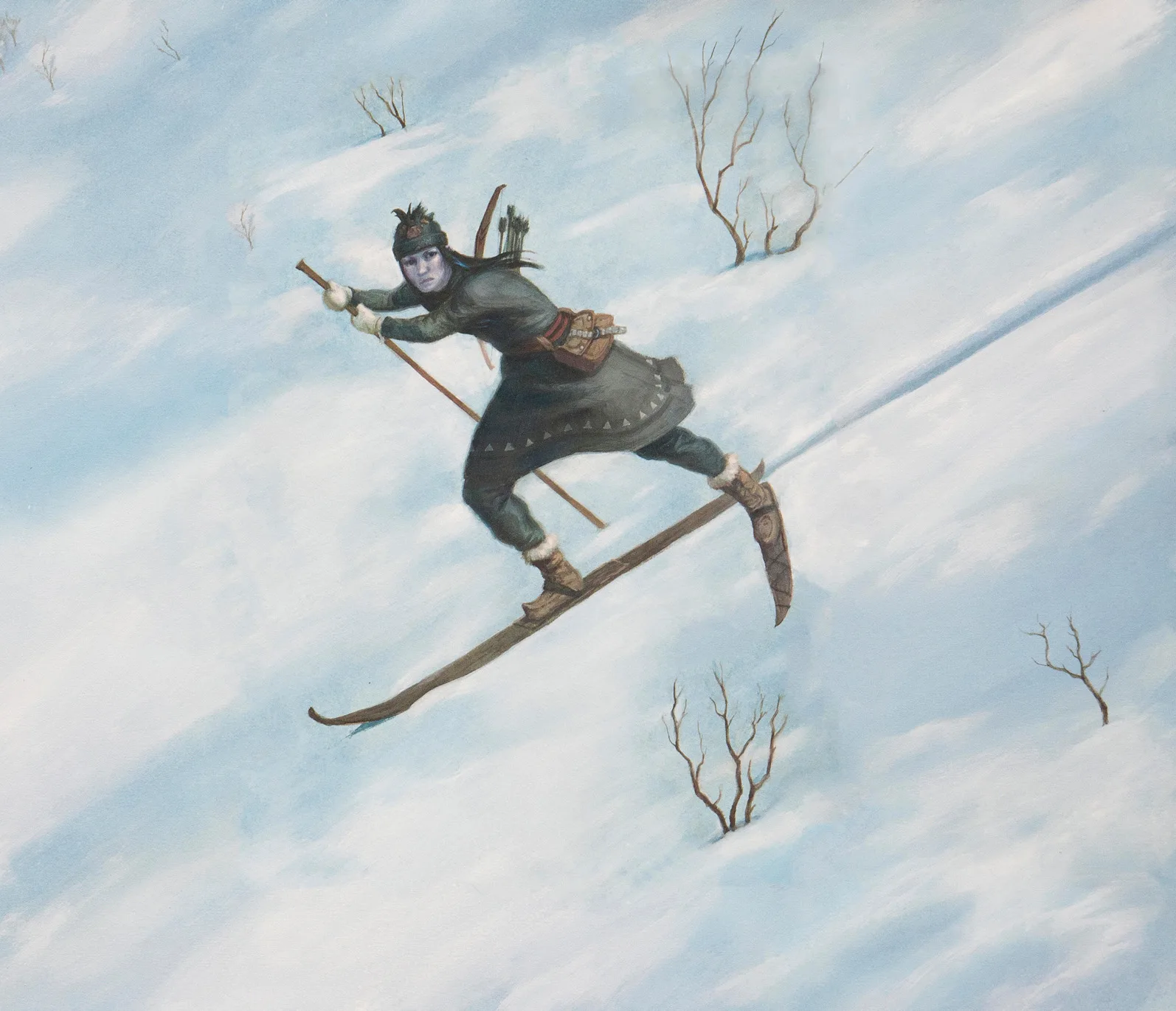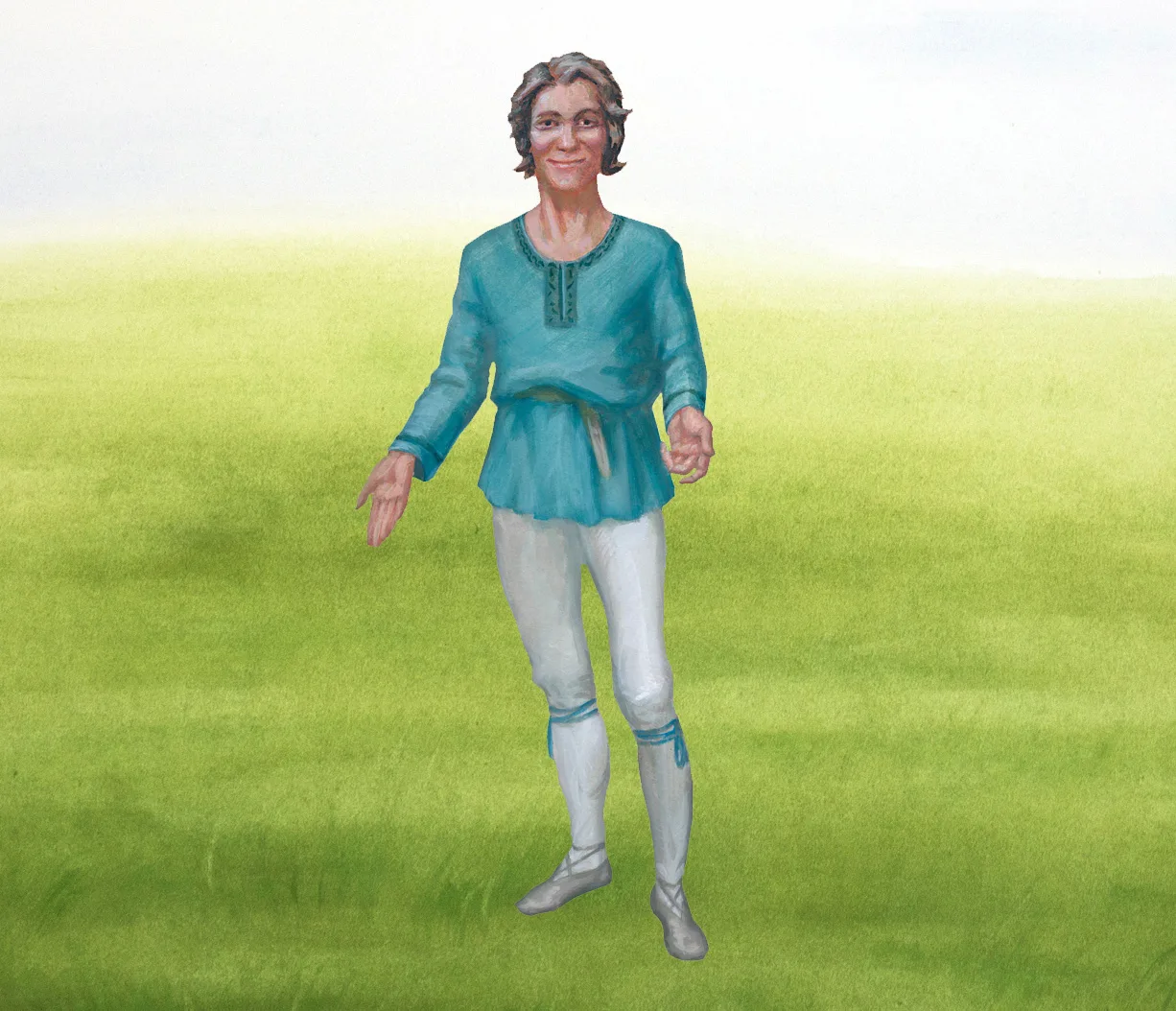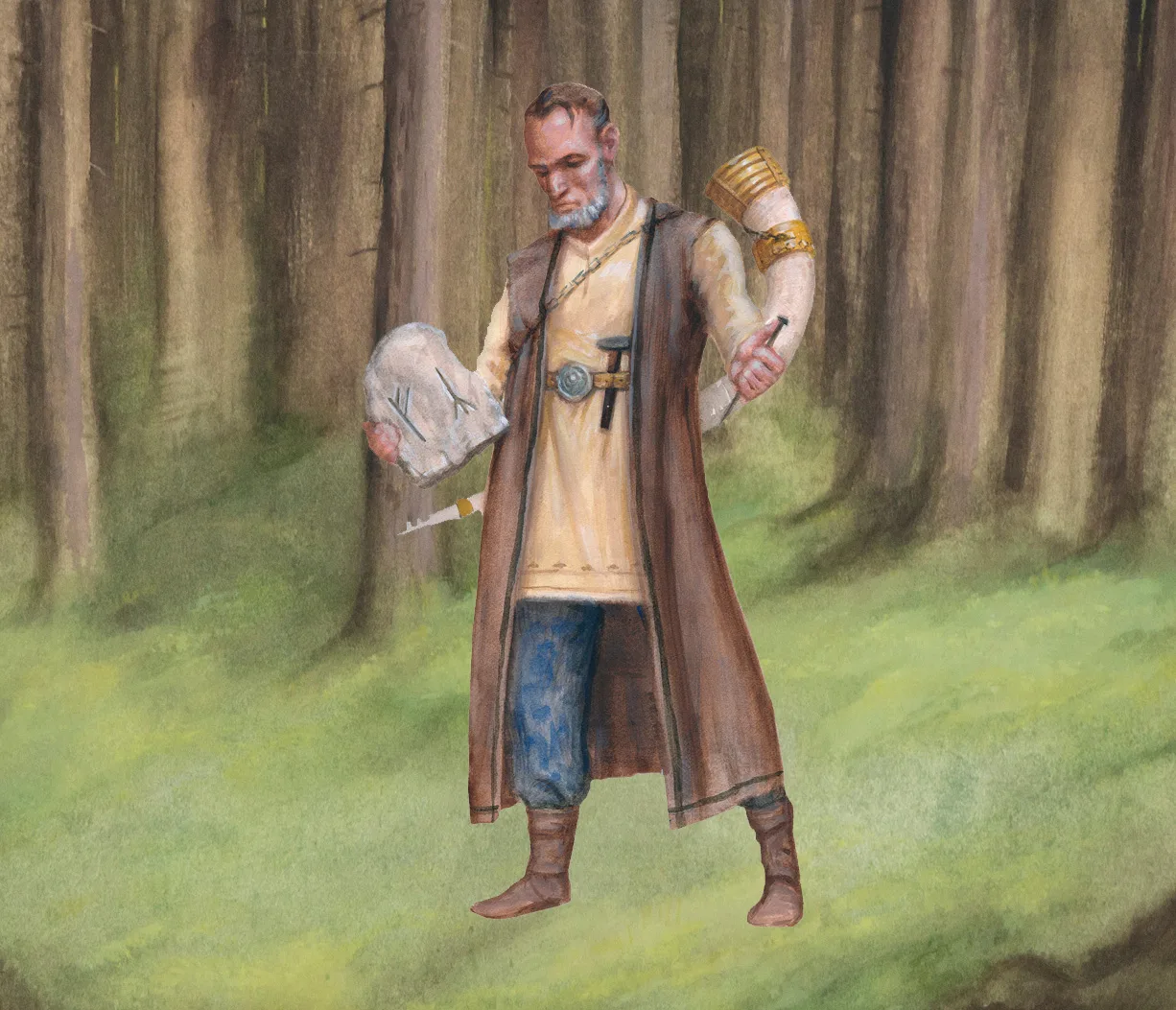Balder – the beautiful and beloved
Iron Age
500 BC – AD 1100
Viking Age
AD 800 – AD 1100
Middle Ages
AD 1050 – AD 1520
Balder lived with his wife Nanna in the shimmering palace Breidablik, which stood in Asgard where the gods dwelt. Breidablik was one of the most beautiful houses in the entire world of the gods – so pure and bright that nothing unclean or evil could exist there. No one could have imagined that Balder was in danger.
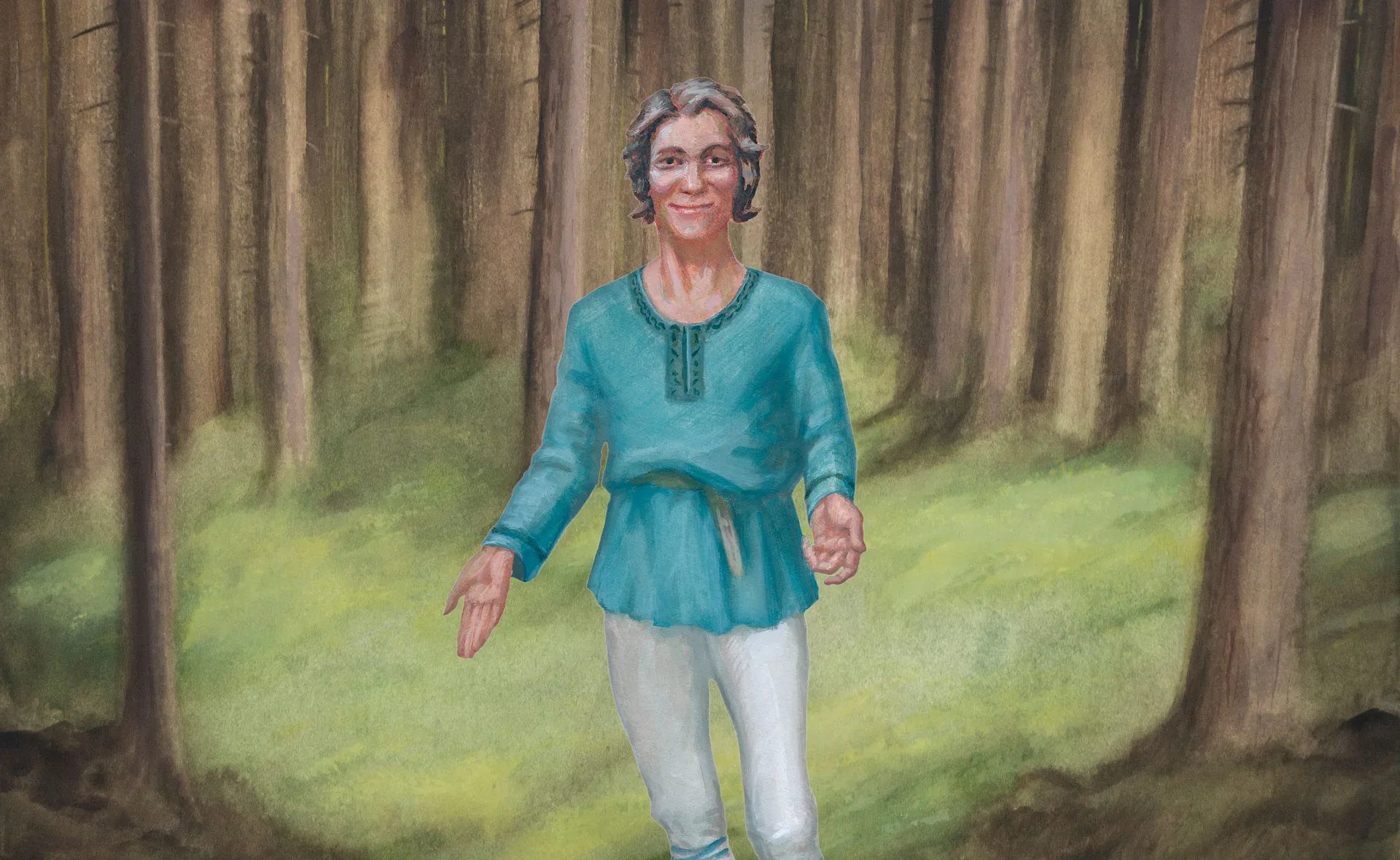
Balder’s dreams
Balder began to have nightmares foretelling that something terrible would happen to him. He sensed that his life was in peril. To protect him, his mother Frigg went to every being and every thing in the world and asked them to swear not to harm Balder. All gave their oath, except the little mistletoe. Frigg thought it was so small and harmless that she did not trouble herself with it.
Balder's death
When the gods amused themselves by shooting arrows and hurling weapons at the “invulnerable” Balder, disaster struck. The treacherous and cunning Loki, disguised as a woman, had tricked Frigg into revealing that the mistletoe had not sworn the oath. He had an arrow made of mistletoe and, during the game, gave it to Balder’s blind brother Höðr, deceiving him into shooting Balder. Balder fell down dead, and it was the greatest misfortune ever to befall both gods and men.

Arrowheads
This is what a Viking Age arrowhead of iron, like the one that killed Balder, looked like.
Great sorrow spread among gods and humans alike. Balder’s body was laid upon his ship Ringhorne. When his wife Nanna saw him lying there, she died of grief and was laid beside him on the pyre. Odin placed his magical ring Draupnir on Balder’s bier and sent it with him to the realm of death.
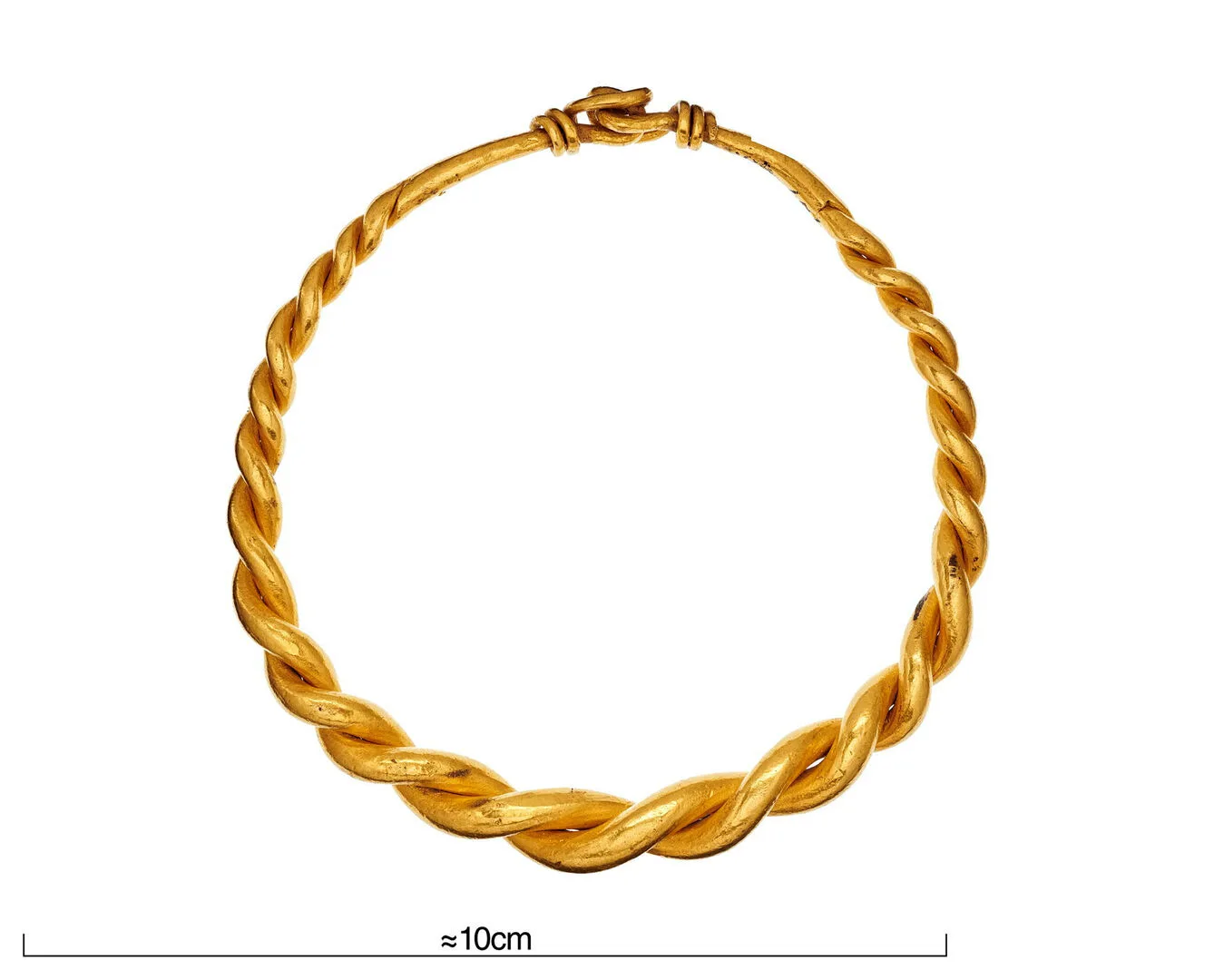
Bracelet
Bracelet of gold found at Norrgårda, Uppland. An example of the beautiful jewelry sent off to the real of the dead during Viking Age burial practices.
On view at Historiska museet in the exhibition Vikingarnas världFind this object in display 59, Vikingarnas värld Monter 59
Balder’s final journey
Balder’s brother Hermóðr was sent to the land of the dead to try to ransom him from the goddess Hel. For the journey, he borrowed Sleipnir, his father Odin’s eight-legged horse. It took nine nights to ride through dark valleys and over high mountains.
The death-goddess Hel promised to let Balder return to Asgard on the condition that every being in nature wept for him. And all did, save for the giantess Þökk, who sat in a cave and refused to shed a single tear. Some say that Þökk was Loki in disguise.
This meant it was impossible to bring Balder back. However, Hermóðr returned with the ring Draupnir.
Facts about Balder
- Name: Balder (also spelt Baldur)
- Parents: Odin (father) and Frigg (mother)
- Siblings: Höðr (brother), Thor (half-brother)
- Qualities: Beautiful, kind-hearted, wise, loved by all
- Symbolism: Light, innocence, peace, justice, hope
- Resides: Breidablik in Asgard




